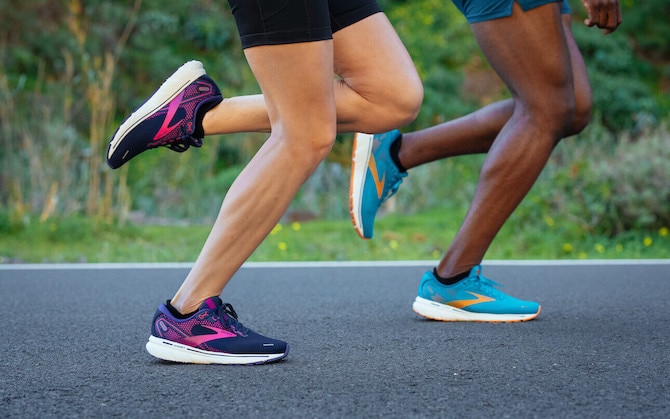Cramping pains after running? Here's a quick guide to relief

When you're new to running, there'll be some twists and turns, ups and downs, and unexpected bumps in the road. Also potholes — definitely watch out for those. After a good run, you may have some muscle soreness, especially in those first couple of weeks. But one of the most common pains during and after the run is cramping.
What is cramping?
Cramps are considered one of the most dreaded pains during or after running. But fear not, as they are usually minor and go away quickly if you take some simple proactive steps, which we'll cover below. Cramping can be loosely defined as a severe contraction of a muscle (or muscles) in the body and is most commonly caused by dehydration and overuse, especially when it comes to running. Knowing that cramps are a fairly common part of running and where they most commonly occur can help you minimize them. And when they do hit, you have a better chance of treating them.
Muscle cramps
There are some common muscle cramps for new runners, as certain muscles take on more of the load of running than others. Calf muscles are notorious for cramps. These muscles take plenty of stress on each step because they play a key role in both propelling you forward and absorbing the impact as your foot hits the ground. Other common muscles that can cramp up include the hamstrings, quads, and the muscles in the arch of your foot.
Stomach cramps
Stomach cramps are technically muscle cramps but are usually caused by shallow breathing or eating or drinking too much before your run. Runners experience both abdominal cramping and what is commonly referred to as "side stitches." As the name implies, a side stitch is cramping on the side of your body right below your ribs.

How to avoid cramping
There are some simple steps you can take to reduce your risk of cramping during or after your run.
- Drink plenty of water, but not right before a run. Drinking water helps keep the body hydrated, and staying hydrated greatly reduces your risk of cramping. Try to drink plenty of water, about 80–120 ounces (or 10–15 glasses), throughout the day. However, to avoid stomach cramping, drink no more than 4–6 ounces within 15 minutes of your run. You can also supplement with electrolytes to replenish what you lose while sweating. Finally, bring a water bottle on your run and take sips throughout, especially on a hot day.
- Breathe. We all breathe without thinking about it, but when you're out on a run (especially a tough one), it' easy for your body to tense up and take shallow breaths. When you feel fatigued, it's important to relax muscle tension and take deeper, more conscious breaths. This delivers more of that much-needed oxygen to your muscles.
- Start out slow. If you're new to running, this simple step is key. Your muscles have not yet adapted to the stress of running, so it's important to start out at a slow, controlled pace. Equally important is to ease your way in and find time to recover. Take rest days, and don't add on more than 10% of your running volume from one week to the next.
At some point in your running journey, you'll likely experience cramping. I wish I could say otherwise, but it's just a part of exercise. Following these simple steps can help reduce your risk of cramping and limit other pains after running. Remember to breathe, take it easy, and drink plenty of water!
Our writer's advice is intended for informational or general educational purposes only. We always encourage you to speak with your physician or healthcare provider before making any adjustments to your running, nutrition, or fitness routines.
